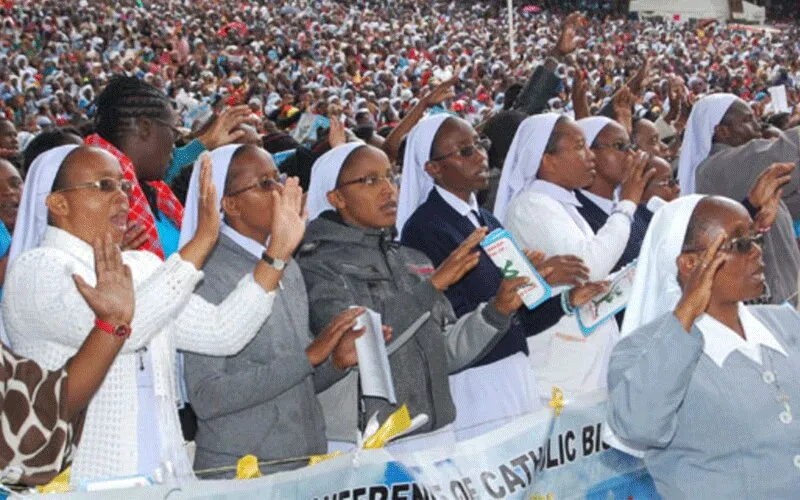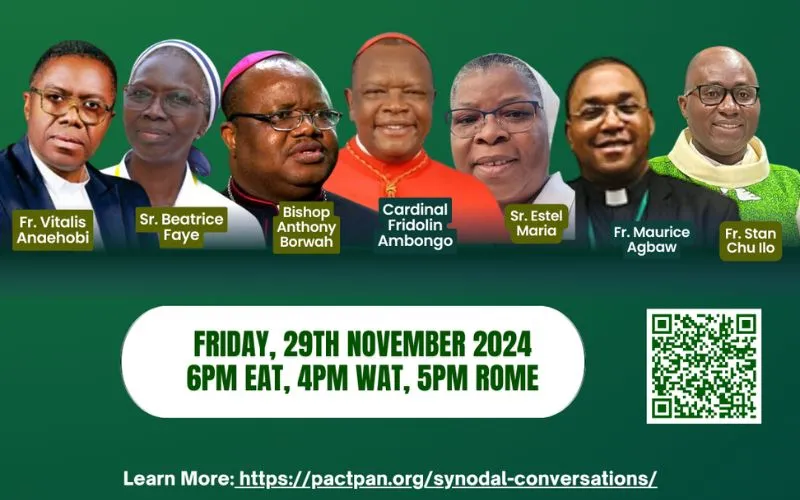Thirdly, there is a need for re-evangelization in areas where the faith is strong but where there is emergence of sects and cults within the Church. The Cleric, in this case, gave the example of Gwata Ndai, a cult within Nairobi that had attracted members of the Church.
“Strong Catholics in Nairobi including those active in the Catholic Men Association went to Gwata Ndai to be initiated. They still came to Church but maintained strong cultural inclinations of this cult,” Fr. Teddy said of the group that emphasized strong cultural practices that he said went against the doctrine of the Church.
The pastoral animator also engaged participants in discussing the emerging shift from studying church related subjects and disparities in vocations where some Dioceses have more Priests than others. He encouraged the sharing of human resources between Dioceses.
“Today, people in Religious Life are shifting from studying Church-related subjects and Canon Law and pursuing secular courses such as Engineering instead,” he said.
In his considered view, “We need to be masters in Canon Law, Scripture and other Church matters in order to provide the leadership and guidance that is required in the Church.”
(Story continues below)
Other issues affecting evangelization, especially in marginalized areas are famine and tribal tension, according to the Comboni Missionary who ministers in Kenya’s Eldoret Diocese.
Narrating his experience in Turkana, one of the country’s marginalized areas, he said, “I used to travel for over 140 kilometers to go and celebrate Mass in one far-away outstation or the other. On reaching, I would find people who were not concerned about Mass at all but whose only concern was getting a meal because they rely on relief food.”
Some participants in the October 23 webinar, however, noted that ill health made them shun hardship areas.
Still, others said that they had no say in terms of choosing where to go for their apostolates since such decisions are made by their respective Religious Superiors.
Sr. Florence blamed older members of various Religious Orders for misleading younger members by talking ill of marginalized areas.
“Some of us who are older in Religious Life may discourage the young ones who join Religious Life, energetic to serve the people of God in marginalized areas, Sr. Florence said.
the member of the Sisters of Mary of Kakamega explained, “We talk terribly about missions in such places and when a young sister says she has been sent to such a place, we ask them what they did wrong to deserve such a punishment. We tell them that they must have stepped on their superior’s toe to be sent to such areas. This should never be the case.”
Other participants at the two-hour meeting talked about the need to immerse themselves in the cultures of the indigenous communities where they are sent to evangelize including learning the local languages to evangelize effectively.
In his final remarks at the event, Fr. Bonaventure Luchidio, the PMS National Director in Kenya encouraged the participants to be open to the different ways in which the laity are willing to help build the Church.
“The problem we have these days is that Priests want money more than the goods that the members of the Church are usually willing to give and to afford. Let us allow Christians to give what they can afford,” he said.
“The Church and the mission is about giving and receiving. It is time to teach our Christians to support our missions,” the PMS Director said and added, “Our donors today are the Christians. From them, we can get the support in our missions.”
Agnes Aineah is a Kenyan journalist with a background in digital and newspaper reporting. She holds a Master of Arts in Digital Journalism from the Aga Khan University, Graduate School of Media and Communications and a Bachelor's Degree in Linguistics, Media and Communications from Kenya's Moi University. Agnes currently serves as a journalist for ACI Africa.








